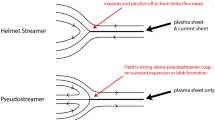Abstract
An explanation of the magnetic fields of the universe, the central mass concentration of galaxies, the massive black hole of every galaxy, and the AGN phenomena has been an elusive goal. We suggest here the outlines of such a theoretical understanding and point out where the physical understanding is missing. We believe there is an imperative to the sequence of mass flow and hence energy flow in the collapse of a galactic mass starting from the first non-linearity appearing in structure formation following decoupling. This first non-linearity of a two to one density fluctuation, the Lyman-α clouds, ultimately leads to the emission spectra of the phenomenon of AGN, quasars, blazars etc. The over-arching physical principle is the various mechanisms for the transport of angular momentum. We believe we have now understood the new physics of two of these mechanisms that have previously been illusive and as a consequence they impose strong constraints on the initial conditions of the mechanisms for the subsequent emission of the gravitational binding energy. The new phenomena described here are: 1) the Rossby vortex mechanism of the accretion disk viscosity, and 2) the mechanism of the α - Ω dynamo in the accretion disk. The Rossby vortex mechanism leads to a prediction of the black hole mass and rate of energy release and the α - Ω dynamo leads to the generation of the magnetic flux of the galaxy (and the far greater magnetic flux of clusters) and separately explains the primary flux of energy emission as force-free magnetic energy density. This magnetic flux and magnetic energy density separately are the necessary consequence of the saturation of a dynamo created by the accretion disk with a gain greater than unity.
The predicted form of the emission of both the flux and the magnetic energy density is a force-free magnetic helix extending axially from the disk a distance depending upon its winding number and radius of its flux surfaces, a distance of Mpc's. This Poynting flux of magnetic energy would be invisible unless the currents bounding the magnetic field are dissipated. By definition of force-free, these currents are parallel to the field and throughout its volume. Therefore the dissipation must be throughout the volume as opposed to the conventional reconnection which takes place only at surface layers. This radically different interpretation of reconnection is supported by the observation of "interruption" events in fusion tokamak experiments. Here, and presumably in the galactic case as well, the parallel currents and their dissipation is mediated by run-away, high energy electrons and ions. It is then natural to seek an explanation for the emission spectrum of the dynamo-produced Poynting flux in the same synchrotron emission associated with the dissipation of these run-away currents. We propose the radically different view that these ultra high energy, run-away electrons directly produce the emission spectra as compared to the published models that assume an acceleration of bulk matter to a γ ∼ 10 and then reconvert this kinetic energy by shock heating into a highly relativistic plasma, γ ∼ 106.
Similar content being viewed by others
References
Blanford, R.D. & Payne, D.G. 1982, MNRAS, 199, 883
Sturrock, 1971 ApJ., 164, 529
Kurzan, B., Steuer, K.H, & Fussmann, G., 1995, Phys. Rev. Let.; 75, 4626
Kurzan, B., Steuer, K.H. 1997, Phys Rev., 55, 4608.
Navaro, J.F., Frank, C.S., & White, S.M., 1996, Ap.J, 462, 563.
Lovelace, R.V.E., Li, H., Colgate, S.A., & Nelson, A.F., 1998, “Rossby wave instability of Keplerian accretion disks”, submitted.
Shakura, N.I. & Sunyaev, R.A., 1973, A&A, 24, 337
Zurek, W.H., Siemiginowska, and Colgate, S.A., 1994, Ap.J., 434, 46, & Addendum ibid. 470, 652
Rights and permissions
About this article
Cite this article
Colgate, S.A., Li, H. Dynamo Dominated Accretion and Energy Flow: The Mechanism of Active Galactic Nuclei. Astrophysics and Space Science 264, 357–380 (1998). https://doi.org/10.1023/A:1002419126110
Issue Date:
DOI: https://doi.org/10.1023/A:1002419126110




